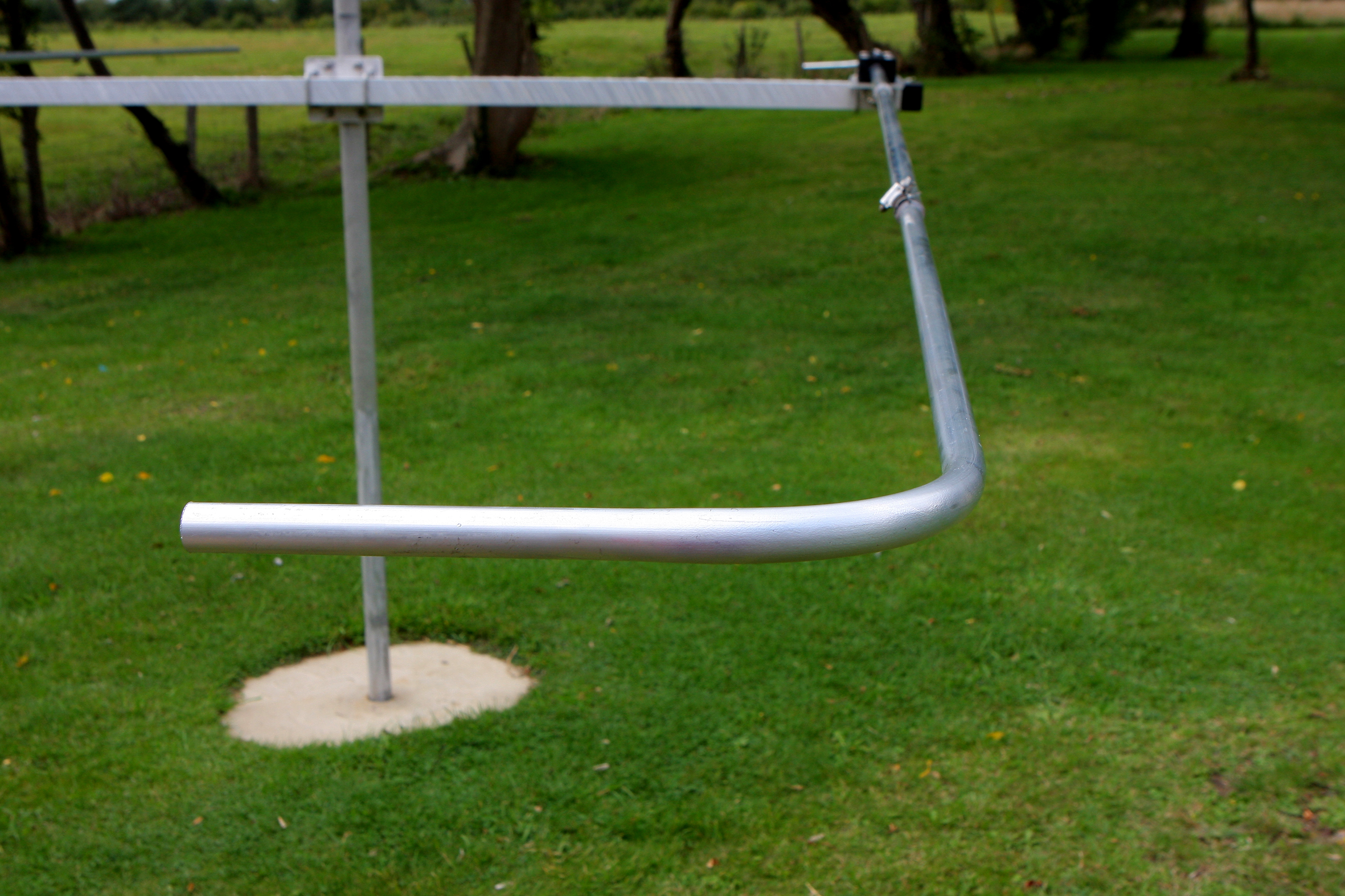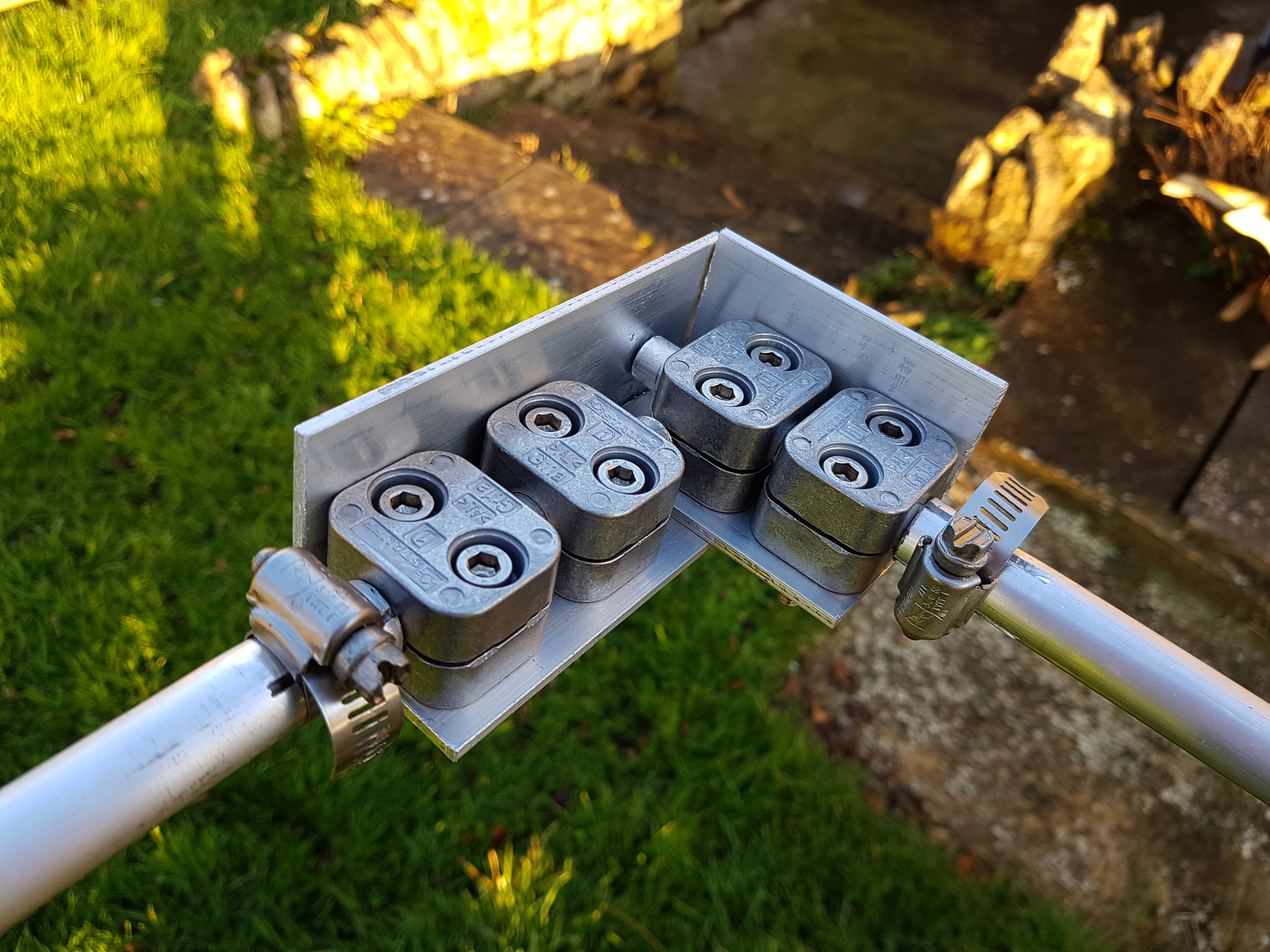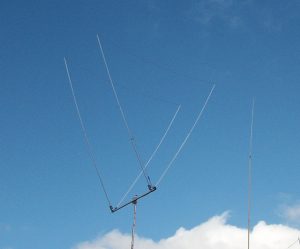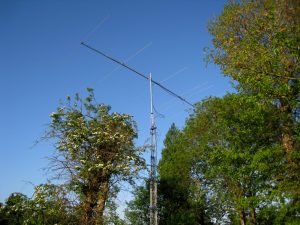Superstrength 90 Degree Endplates and Supports for Moxon Antennas
Here’s a nifty solution for constructors putting together a ‘Moxon‘ rectangle.
Normally, most constructors will fire up the freely available ‘MoxonGen’ software [available from AC6LA]. That will give them the basis for a good model which you can even export to EZNEC which is very useful. However, when you look online – there’s quite a few builders [and commercial suppliers] who use a 90-degree corner bend by using a ‘Pipe-Bender’ to create the 90-degree bends.
OK – hands up. I did the very same [albeit for a very short time] at Vortex after following some pretty misguided advice online, but the method is very poor for a couple of reasons.
Firstly it lacks any rigidity. It’s also a very lazy and ‘Heath-Robinson‘ affair. I now even cringe at ever thinking of doing it like this. If you also measure the whole 90-degree bend, it’s actually a lot longer than the antenna model predicts so introduces errors and presents a very inaccurate actual build.
Ok the antenna will work, but expect errors mainly at higher HF and particularly more so at VHF.

I’ve built many ‘Moxons’ and deviate even slightly ‘OFF’ the beaten track with measurements and you are guaranteed to own an aluminium scrapyard and antenna that will be nowhere near the predicted model.
The Moxon is really that ‘picky‘ – you can create a duplicate build [from saved results in the past], then construct the exact same model and get a very different VNA or antenna analyser result. Sounds daft – but true!
You can [to some degree] compensate for it by measuring the whole radius of the corner – but not 100%. Actual real-world measurements will be different. With a ‘Moxon’ – even very small errors in the lengths can lead to big changes in the returned values in a real-world model.
We found an error of 1 cm [based on the 10m band] reduced the front to back by nearly 5db. So accuracy is king for sure.
‘MoxonGen’ gives you a model with a direct ‘Straight-Wire’ 90-degree section at the end and the associated lengths. After various experimentation, I found the below solution worked very well and was about as close to the model as I could achieve.
As a plus, structurally it was far far better than the flimsy ‘Bent Tube‘ plumbers solution.

Our right-angled bracket is made from 1/8th inch [3.175mm] diameter angle aluminium. This particular stock is 25.4mm x 25.4mm [1 inch x 1 inch] in width. We then mount two standard series ‘Stauff‘ Aluminium Group 1A Clamps which form the support function.
Each clamp will support a small length of 12mm aluminium tube. Then the ‘outer‘ 16mm tubes just sleeve over this 12mm stock and are held by a hefty stainless worm-drive clamp. We slot the 16mm tubes in three place to improve the clamping.
As you can see, the whole design puts the tubes at 90 degree’s and follows the model as closely as possible. Setting an additional wire of 25mm in diameter wire within the EZNEC model at the end points gives constant and accurate results.
It’s a really rigid affair and you can bounce elephants off it! [not that you’d want too!] – unlike the bendy tube plumbing method which has now been firmly assigned to the scrap bin!.


